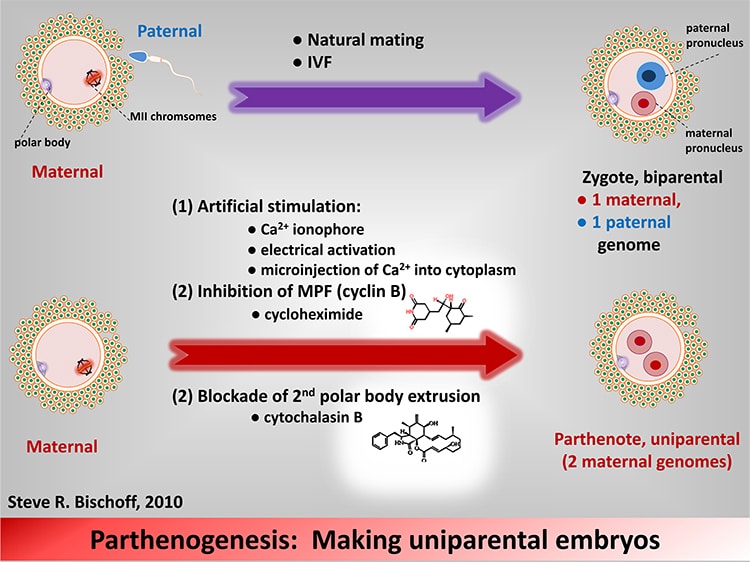A starry smoothound shark (Mustelus asterias), a close relative of the smoothhound shark.
The new arrival at the Cala Gonone Aquarium is named Ispera, meaning hope.
The shark’s mother has lived for years isolated in a tank with only one other female companion.

A starry smoothound shark (Mustelus asterias), a close relative of the smoothhound shark. (Photo: © Hans Hillewaert viaWikimedia Commons,CC BY-SA 4.0)
Therefore, her virgin birth comes as something of a surprise.
Among some small creatures such as bees, wasps, and ants, this asexual reproduction is simpler.
However, for vertebrates it can be quite rare.

A diagram of parthenogenesis induced by scientists on swine oocytes. No naturally occurring mammal parthenogenesis has been scientifically documented. (Photo:Wikimedia Commons,CC BY-SA 3.0)
Most recorded examples of vertebrates in captivity reproducing byparthenogenesisconcern fish or sharks.
There are two processes by which parthenogenesis can occur.
The offspring is always female as mothers can only provide X chromosomes.
Another process is calledapomixis.
The reproductive cell splits through mitosis into two identical cells, each containing the full DNA of the mother.
With respect to the shark, automixis resulted in a very similar but unique offspring.
Ultimately, it is not known for sure why vertebrates spontaneously (but rarely) reproduce through this process.
It may be that it is a last-ditch biological effort when mates are lacking.
Are you likely to see your female pet bunny having a virgin birth anytime soon?
There are no scientifically documented cases of naturally occurring parthenogenesis among mammals.
However, scientists have managed to induce it in mammals in a lab.
For any animal born through parthenogenesis there are certain health risks.
Essentially inbreeding, too many offspring from parthenogenesis could damage the genetic pool of a species.
A diagram of parthenogenesis induced by scientists on swine oocytes.
No naturally occurring mammal parthenogenesis has been scientifically documented.